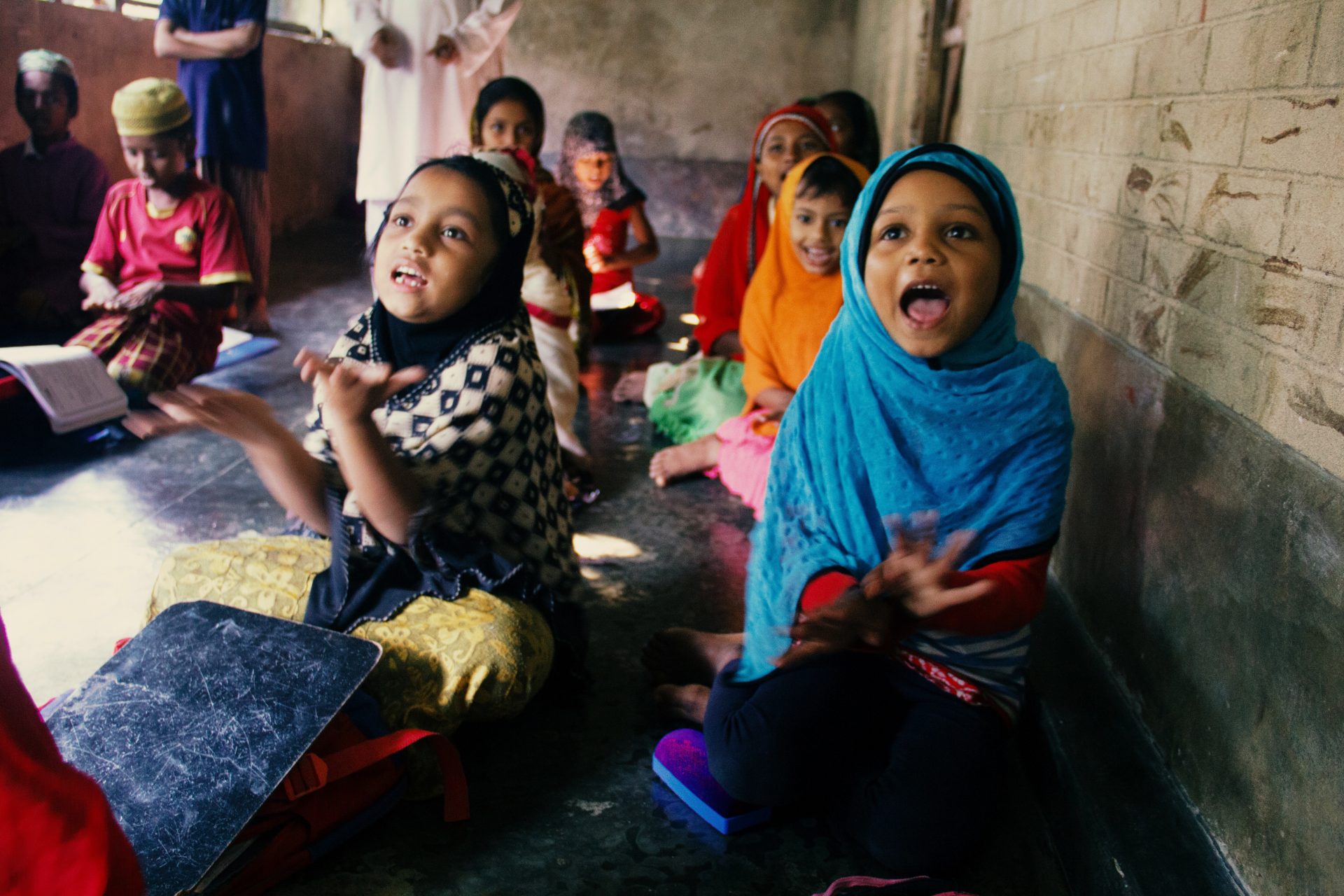
The journey to reconstruct one’s life after war is long and fraught with danger. Current approaches by the global humanitarian system, including peacebuilding processes and local and national laws often make it an impossible journey.
Conflict creates homelessness. Homelessness is one of the most immediate and wide-reaching impacts of warfare. According to the Internal Displacement Monitoring Centre, conflict and violence triggered 8.5 million new displacements in 50 countries in 2019 alone. Of those 8.5 million, some will flee their country and become refugees, seeking asylum in various host countries. The vast majority will remain trapped in their home country, ever at risk of violence. Even those that succeed in escaping conflict zones face immense difficulties in rebuilding their lives in a new place, surrounded by new faces speaking new languages, often with little social, economic, or cultural support.
Permanent Impermanence
The Rohingya crisis in Myanmar has dominated global attention in recent years, and for good reason. For refugees fleeing Rakhine State, life in neighbouring Bangladesh brought little respite. Approximately 900,000 refugees crossed the border in 2017 and 2018, and the vast majority of these people ended up in sprawling mega-camps in and around Cox’s Bazar. The speed with which the crisis escalated meant that the international humanitarian system was stretched to its limit trying to supply refugees with suitable emergency shelter. For some local residents, the arrival of an army of foreign actors and resources to support the refugees created the perception that these “intruders” were being prioritised over an already-poor community. More recently, The New Humanitarian reports that COVID-19 has stoked tensions further, and has provided a potential spark for conflict between the refugees and their host community. International NGOs are taking precautions to prevent an outbreak in the overcrowded camps, while local communities have received limited support from a stretched Bangladeshi government.
In times of crisis, these sources of tension can boil under the surface between groups.
We do not know how long these Rohingya refugees will be displaced. Even if the ethnic cleansing in Rakhine is brought to a close, many may never return. Some may be granted asylum status in Bangladesh or elsewhere, but this is never guaranteed. The long-term outcomes of this exodus are yet to be seen, but we can look to previous conflicts, and previous displacements, for an example of what can become of individuals made homeless by violence.
In Bosnia-Herzegovina, the scars of a conflict that officially ended 25 years ago remain deep and visible. Particularly for those affected by the worst atrocities of the conflict, the wounds are still fresh. The Guardian reported in February 2020 that many survivors of the Srebrenica Genocide, where over 8,000 Bosniak Muslim men and boys were massacred in July 1995, remain living in the so-called “temporary” refugee village of Mihatovići, dependant on humanitarian aid and unable to rebuild their lives. To quote one 45-year-old survivor from the article, who lives in the village with her mother after losing several male family members in the massacre, “When I arrived in Mihatovići, I thought that they would assign us a real home. Here we still are after 25 years. A family of five living on my mother’s war pension of about €400 a month.”
Much like the paralysed political system in Bosnia-Herzegovina that is still so heavily shaped by the Dayton Accords and the remnants of the conflict, the displaced families of Mihatovići find themselves frozen in time.
The long-term impact of conflict is unquantifiable. We see figures like the 8.5 million people displaced by conflict in 2019, but we fail to grasp the scale of that misery. How many of those people will ever return home? How many will find safe passage to a new place, somewhere else in the world? And how many will be lost in time like the families of Mihatovići, no longer a member of their old community, but unable to start a new life in earnest elsewhere? According to the EU, displacement lasts an average of 20 years for refugees and more than 10 years for 90% of IDPs. The majority of displaced persons that end up in camps are forced to live in temporary and transitional shelters with little in the way of livelihood opportunities. This can breed aid dependency and prevent individuals from having agency over their own lives.
The national and international systems that handle refugees and displaced persons create a context in which people are forced into permanent impermanence, unable to plan for the future or put down roots in a new location. Without these roots, it becomes almost impossible to move on. Some of this is an unavoidable consequence of war. As with the arrival of 900,000 Rohingya refugees in Cox’s Bazar, sometimes even providing basic food, water, and shelter requires miracles to be performed by the host community, international humanitarian system, and displaced people themselves. However, in other cases, legal restrictions, discriminatory government policies, and social isolation from host communities act as barriers to individuals displaced by conflict. While this is common in refugee camp settings, there are several examples of progressive policies that support refugees in building meaningful lives and livelihoods in displacement settings.
Building a Better Future in Displacement Contexts
For example, in Uganda’s Bidi Bidi camp, the second largest in the world, progressive policies have allowed refugees to build more permanent structures than their counterparts in other refugee camps globally. The standard white tent structures have been replaced by more permanent housing, built with mud and thatch, and, in some cases, brick. As a result of this stability, community ties have flowered. Small businesses have been set up. Public spaces host town meetings and local aid organisations work closely with refugees to help develop skills and provide livelihood opportunities. Bidi Bidi refugee camp is becoming a city. To quote National Geographic’s investigation into the unique experiment taking place in Bidi Bidi, “Even in well-planned camps such as Azraq in Jordan’s desert, the starkness of life without jobs or a sense of belonging sends refugees back to Syria or forces them to try to earn money in dangerous, under-the-table arrangements. In Uganda, under one of the world’s most progressive policies, those who’ve fled civil war in South Sudan can live, farm, and work freely.”
In Myanmar’s northern state of Kachin, there has long been growing tension between IDPs living in camps as a result of the outbreak of violence in 2011. Surrounding communities have come to view the displaced people as lazy and dependant on aid. In a context of ongoing intergroup tension and violence, such stereotyping and animosity can be a dangerous thing. In an effort to reduce these tensions, the government announced in 2018 that it would be closing the camps and rehoming displaced persons in new communities around Kachin and Northern Shan states. In response to this, Karuna Mission Social Solidarity (KMSS), the Burmese arm of the global Caritas movement, with support from Catholic Relief Services (CRS), set out to help the displaced families settle into their new communities, using their shelter programme to help generate social cohesion.
The programme itself was informed by lessons learned from the Rohingya response in Cox’s Bazar, and aimed to facilitate social interaction between the displaced and host communities by providing cash assistance to the displaced households to use in the construction of their new homes. KMSS provided training to both the displaced families and the host community to ensure construction standards were met. It then provided cash to displaced households which they could use to purchase materials and labour from their new neighbours. KMSS and CRS technical support was available throughout the process, and local community members were encouraged to take ownership of the reconstruction projects and of welcoming the new households into their communities. In 2020, 46 households were rehomed in this way, and the project continues to grow. Many more IDPs have expressed interest in joining the project, and KMSS and CRS are recording the results of the project for other humanitarian actors looking to support long-term social cohesion through similar initiatives.
Humanitarian shelter and settlement programming is increasingly seen as dated. The idea that post-disaster or post-conflict international NGOs can provide temporary accommodation in the form of tents or shelters and consider their job done has long been challenged by those working in the sector. There is now momentum behind the idea that shelter is “more than four walls and a roof,” and that it actually represents an important steppingstone from post-disaster response towards full recovery. Refugee camps throughout the world have demonstrated that “temporary shelter” is a fallacy, but NGOs are often restricted by limited funding, government legislation, and a lack of mandates for long-term response. As a result, in many cases they are still required to provide the most basic materials for housing.
As Mihatovići demonstrates, this temporary accommodation can last for decades. Those with the skills and resources can and do update their housing over time to turn it into something that better meets their needs, but this often happens over the span of years and with great difficulty. If we approach shelter from the earliest possible stages as something that has the potential to change a life and support a household’s recovery from humanitarian crisis, we can give agency to those affected by disaster and accelerate the return to a semblance of normality.
In Bidi Bidi, progressive land and construction laws enabled refugees to build their own city and start their own economy, rather than be forced into temporary accommodation with aid handouts as their only source of income. With this freedom, a new community has thrived. In Kachin, collaborative house construction has built community ties that previously did not exist, and has given hope to many displaced families that they can wrestle control of their future back from the hands of the combatants that forced them to flee their homes years ago.
When we talk about peacebuilding, we are usually referring to the development of culture, institutions and social networks that can bring groups together for mutually beneficial ends. The physical act of building itself is usually the first, and most important, requirement of post-conflict recovery. Done right, it can also be a tool for peacebuilders to support communities in settling into new contexts together. For too long we’ve looked at shelter as something that keeps the rain off our heads. But seeing shelter as a process through which peace can be supported and lives can be rebuilt can help to marry the physical and social recovery of a community wracked by violence.
The destruction of life in a warzone can take seconds. The resulting displacement, dependency, and insecurity can, and all-too-often does, last a lifetime.
But it does not have to.
Shelter operations are a core pillar of any humanitarian response. But shelter is a process, not an object. By working with affected communities, both displaced groups and host populations, the shelter process can be a powerful foundation for long-term peace.
To build a home is to give the opportunity to build livelihoods. To build livelihoods is to build communities. And to build communities is to build peace.
I have been privileged to learn about this emerging theme in humanitarian shelter through my work with QSAND in Myanmar, supporting the CRS and KMSS project in Kachin, and through the shelter and settlement practitioners that make up the Global Shelter Cluster, which is responsible for coordinating humanitarian shelter operations around the world. For those of us who live in relative security, we can often take our living space for granted. For those who have been forced to flee, a chance to rebuild a life often starts with the foundations of a new home.






